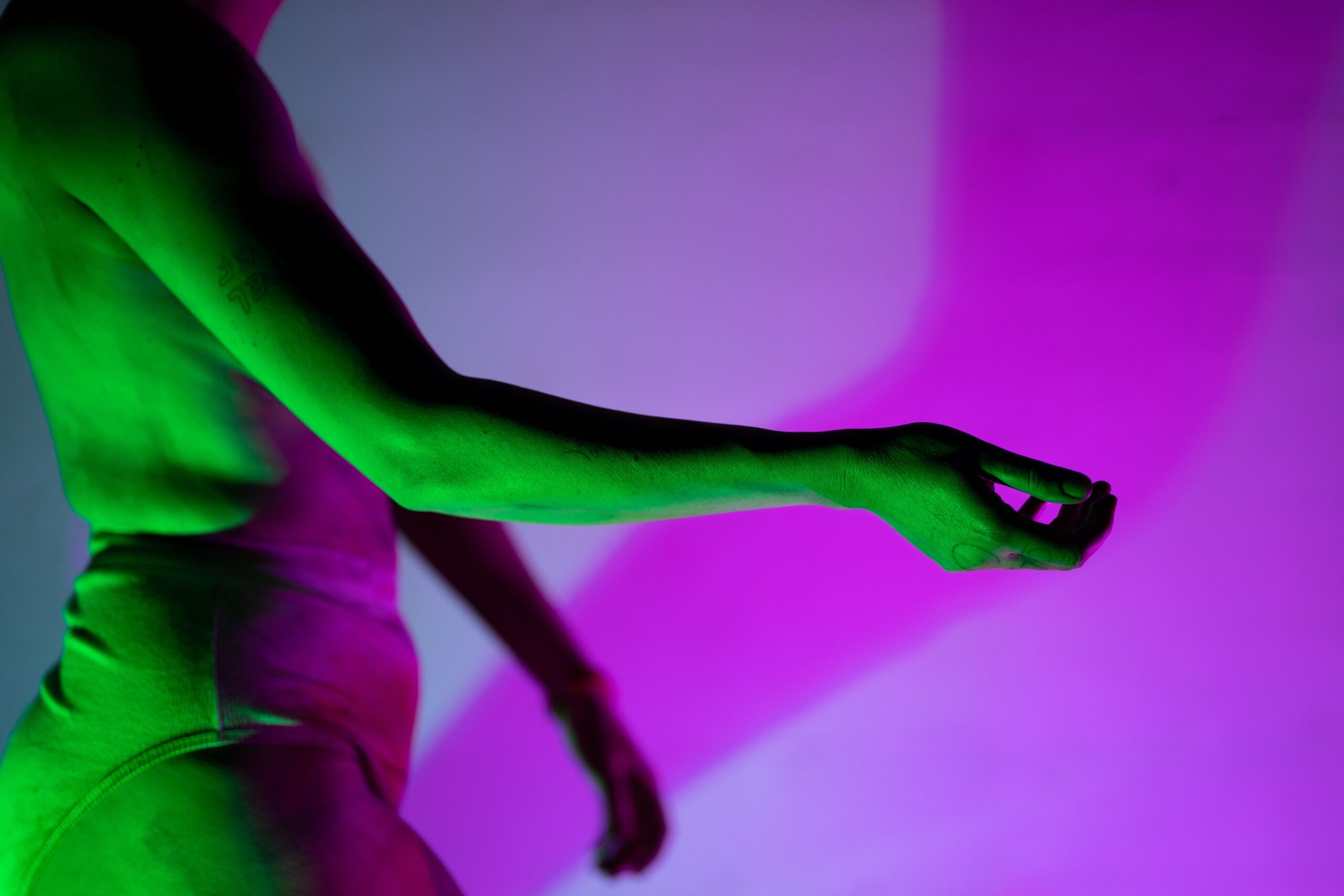
Photo by Robbie Sweeny
[ID: Dear’s headless torso framed standing in profile under magenta pink light, their right arm reaches out gently and is illuminated in contrasting vibrant green light. Their pose conveys patient apprehension, as if waiting to receive another hand to hold their outstretched one.]
Earlier this year scientists announced the earth’s core’s rotation slowed down, stopped and maybe even changed direction. I think it’s a hint.
————
Notes BEFORE beginning Sick Dance: the process is the purpose. Lean into comfort and ease and gentleness and curiosity over force and directing and doing. This movement practice is at best an invitation for your intelligent muscles and tissues to take over, directing your attention and movement. Take breaks as needed. All you need for this practice is a comfortable place to do it.
To BEGIN, from an upright position (laying down if you are bed-bound to standing if you are able-bodied), come to stillness and slowly bring your *attention* to the points or areas of your body in contact with the ground. The ground is any stabilizing surface that is supporting you – bed to earth.
Notice the physical cues, physical sensations that tell you that you are touching the ground. Notice them in as much detail as possible as gently as possible. When you get distracted, begin again. Set a timer if you need or want, anywhere from 90 seconds to 5 minutes.
Break. Do whatever your body needs to do. Consider – what did you notice about your physical sensation of touching the ground?
When you’re ready, RETURN again, to your upright position – laying down if you are bed-bound, seated/reclining/standing (whatever works for your disabilities), or standing if you are able-bodied. Closing your eyes if you like, breathing at your pace, center, settle. Now, in stillness, direct your attention inward, to all the physical sensations of having a body you are aware of at this time.
You’re not making anything up. The physical sensations could be obvious or subtle. They could be many or few. They could be small or large. Whatever you notice is good.

In your own time, allow your attention to come to rest on the Strongest Physical Sensation – this will be the easiest sensation to rest your attention in. Again, it could be anywhere in your body, any size, any intensity.
Gently, begin to notice the details of this Strongest Physical Sensation by first noticing the location of the sensation: where it is, and where it is not.
You may continue, then, to notice whether this sensation has any boundaries, and whether those boundaries connect to form a shape.
Continue, if you are able, to notice in as much detail whether this sensation has any depth – your body exists in at least 3 dimensions, your physical sensations likely do too.
When you are ready, witness, in addition to the location and depth, any textures within your Strongest Physical Sensations.
You may continue to notice some other details about your Strongest Physical Sensation. You may notice very few details. Whatever you notice is good. These details may be subtle or obvious, big or small, you may notice a lot or very little detail. You’re not making anything up, you are just witnessing what is already here.
If it is easier for you to observe only one aspect of your Strongest Physical Sensation at a time, that’s great. If you’re able to practice witnessing different aspects together, that’s great too. If the Strongest Physical Sensation moves or changes, allow your attention to move or change to follow the Strongest Physical Sensation. If you notice you have lost the Strongest Physical Sensation, stop and begin again.
Set a timer and try this out for as long as you like, taking breaks as needed. When you choose to end the practice, rest. After resting, consider – what did you learn from witnessing your Strongest Physical Sensation?
This article appears in the Fall 2023 issue of In Dance.


